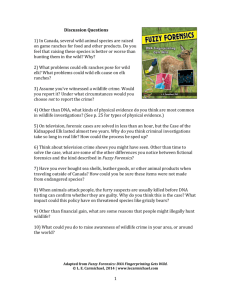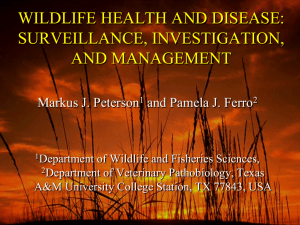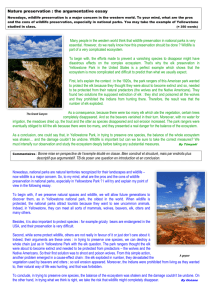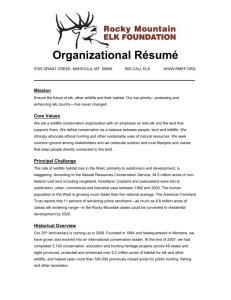Fact Sheet - Fuzzy Forensics
advertisement
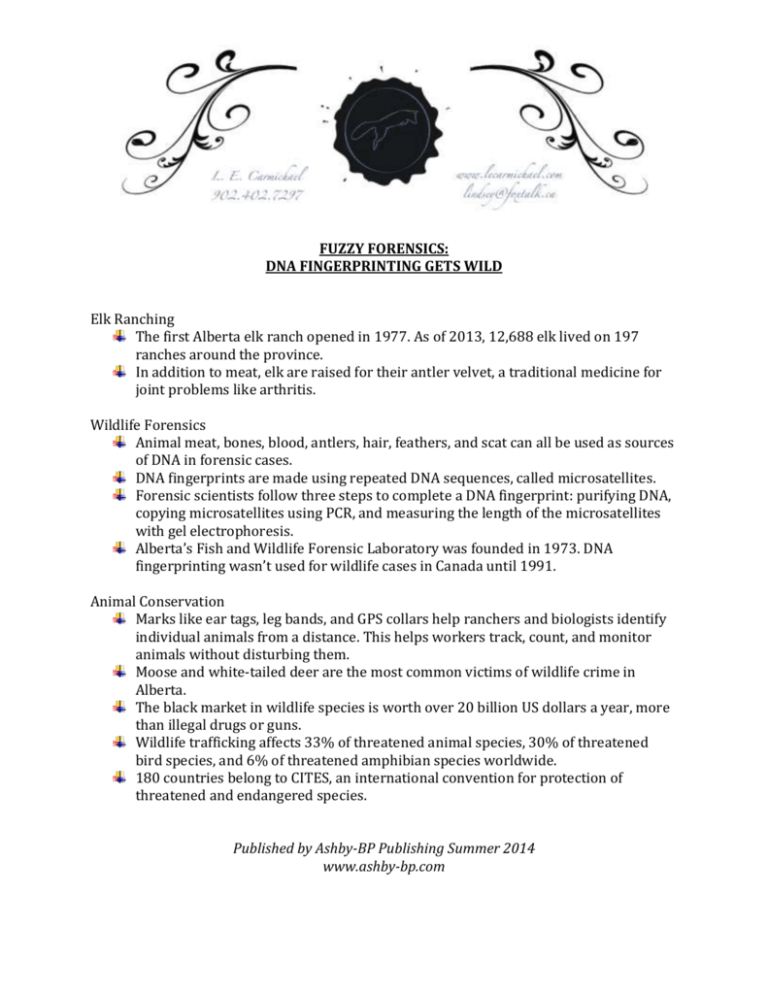
FUZZY FORENSICS: DNA FINGERPRINTING GETS WILD Elk Ranching The first Alberta elk ranch opened in 1977. As of 2013, 12,688 elk lived on 197 ranches around the province. In addition to meat, elk are raised for their antler velvet, a traditional medicine for joint problems like arthritis. Wildlife Forensics Animal meat, bones, blood, antlers, hair, feathers, and scat can all be used as sources of DNA in forensic cases. DNA fingerprints are made using repeated DNA sequences, called microsatellites. Forensic scientists follow three steps to complete a DNA fingerprint: purifying DNA, copying microsatellites using PCR, and measuring the length of the microsatellites with gel electrophoresis. Alberta’s Fish and Wildlife Forensic Laboratory was founded in 1973. DNA fingerprinting wasn’t used for wildlife cases in Canada until 1991. Animal Conservation Marks like ear tags, leg bands, and GPS collars help ranchers and biologists identify individual animals from a distance. This helps workers track, count, and monitor animals without disturbing them. Moose and white-tailed deer are the most common victims of wildlife crime in Alberta. The black market in wildlife species is worth over 20 billion US dollars a year, more than illegal drugs or guns. Wildlife trafficking affects 33% of threatened animal species, 30% of threatened bird species, and 6% of threatened amphibian species worldwide. 180 countries belong to CITES, an international convention for protection of threatened and endangered species. Published by Ashby-BP Publishing Summer 2014 www.ashby-bp.com
